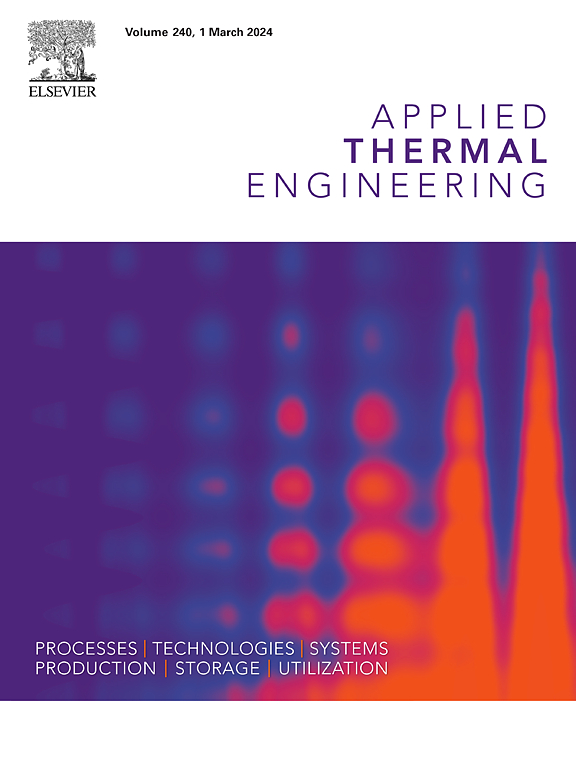通过先进的CFD建模优化生物质气化制氢和效率
IF 6.1
2区 工程技术
Q2 ENERGY & FUELS
引用次数: 0
摘要
气化是一种将生物质转化为生物炭、生物油和合成气的热化学过程。本研究应用计算流体力学(CFD)预测冷气效率(CGE)和氢气产率(yH2),结合热解子模型和固气反应的平均本征反应性方法,评估温度对气体组成和反应动力学的影响。建立了二维下吸式气化炉模型,模拟了空气气化(B)、CaCO3催化气化(BC)、蒸汽气化(BS)和蒸汽和CaCO3同时气化(BCS)四种气化条件下的物质迁移和反应机理。模型验证表明,CFD准确地捕获了实验观察到的效应,预测合成气成分的整体误差为7.71%。在BCS条件下,蒸汽和CaCO3的结合通过促进焦油重整和CO2捕获来提高氢气产量,最大yH2达到308 ml H2/g生物质。结果证实,蒸汽和CaCO3提高了冷气效率和产氢率,与实验观察结果一致。这项研究强调了CFD作为预测生物质气化性能的可靠工具,特别是对于富氢合成气生产。本文章由计算机程序翻译,如有差异,请以英文原文为准。
Optimizing hydrogen production and efficiency in biomass gasification through advanced CFD modeling
Gasification is a thermochemical process that converts biomass into biochar, bio-oil, and syngas. This study applies Computational Fluid Dynamics (CFD) to predict Cold Gas Efficiency (CGE) and hydrogen yield (yH2), integrating a pyrolysis submodel and an average intrinsic reactivity approach for solid–gas reactions to assess the influence of temperature on gas composition and reaction kinetics.
A two-dimensional downdraft gasifier model was developed to simulate species transport and reaction mechanisms under four experimental treatments: gasification with air (B), with CaCO3 as a catalyst (BC), with steam addition (BS), and with both steam and CaCO3 (BCS). Model validation demonstrated that CFD accurately captured the effects observed experimentally, predicting syngas composition with a global error of 7.71 %. The highest CGE achieved was 61.6 %, and the maximum yH2 reached 308 ml H2/g biomass under the BCS condition, where the combination of steam and CaCO3 enhanced hydrogen production by promoting tar reforming and CO2 capture. The results confirm that steam and CaCO3 improve cold gas efficiency and hydrogen yield, aligning with experimental observations. This study highlights CFD as a reliable tool for predicting biomass gasification performance, particularly for hydrogen-rich syngas production.
求助全文
通过发布文献求助,成功后即可免费获取论文全文。
去求助
来源期刊

Applied Thermal Engineering
工程技术-工程:机械
CiteScore
11.30
自引率
15.60%
发文量
1474
审稿时长
57 days
期刊介绍:
Applied Thermal Engineering disseminates novel research related to the design, development and demonstration of components, devices, equipment, technologies and systems involving thermal processes for the production, storage, utilization and conservation of energy, with a focus on engineering application.
The journal publishes high-quality and high-impact Original Research Articles, Review Articles, Short Communications and Letters to the Editor on cutting-edge innovations in research, and recent advances or issues of interest to the thermal engineering community.
 求助内容:
求助内容: 应助结果提醒方式:
应助结果提醒方式:


